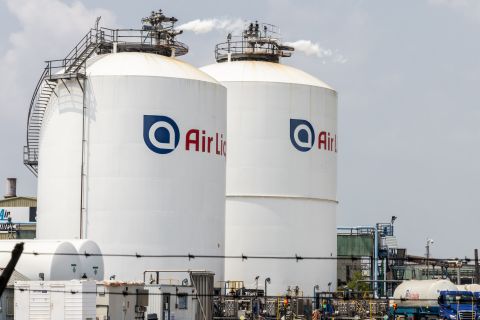Presented by:

This article appears in the E&P newsletter. Subscribe to the E&P newsletter here.
Oil and gas producers are seeking to do more and more to further their ESG goals, and this is leading to the emergence of new trends and technologies. One such trend, for natural gas producers in particular, is the growing pursuit of responsibly sourced gas. Several standards have emerged, enabling producers to have their gas output certified as responsibly sourced.
Emissions monitoring is a key component of gas certification, and technology designed for this purpose is increasingly being deployed, both at well sites and across other energy infrastructure such as pipelines.
Emissions monitoring and certification
Project Canary is one of the prominent players in the provision of emissions monitoring technology as well as providing certification services that it says are the most comprehensive in the industry, evaluating more than 600 datapoints. Project Canary’s vice president of environmental solutions and regulatory affairs, David Stewart, told E&P that demand for both services has been rising dramatically.

“Most E&P companies and now midstream companies are evaluating different technologies and platforms,” he said.
The company has developed continuous monitoring technology that uses lasers and can be deployed at well pads. The technology continues to evolve.
“The Project Canary sensors are an ongoing evolution in technology development,” Stewart said. “Over the short history of Project Canary, we have undergone significant enhancements led by our in-house science and technology team and through collaboration with the Payne Institute at the Colorado School of Mines and METEC at Colorado State University to lower detection limits, enhance durability and improve the performance of power and communication systems as well as the development of our own dashboard for displaying results.”
Stewart noted that while laser sensors were not a new technology, the use of laser diodes for emissions detection is not widely used by the company’s competitors. He added that Project Canary’s application of the sensor and continuous improvement of all parts of the monitoring system were innovative.
“The innovation is apparent when comparing the older large systems used for continuous emissions monitoring at refineries and power plants,” he said. “Project Canary sensors are lower-cost, much more portable and durable than historic fixed-base monitoring systems.”
(Source: Project Canary)
Project Canary typically installs three of its Canary X units per well pad, which was a “carefully calibrated” decision made after extensive testing at the Colorado State University METEC laboratory, according to Stewart.
“METEC has a mock well site roughly the same size as a typical oil and gas location, which is ~three acres during the production phase,” he said. “Larger pad sizes and applications in the midstream sector have necessitated additional unit deployments. Our current rule of thumb is roughly one sensor [per] one acre, but this will vary depending onsite geography, topography and other factors related to safe placement.”
Project Canary has deployed 1,200 Canary X units to date. Major U.S. shale gas producers including EQT and Chesapeake Energy have launched pilots deploying Canary X units at their well sites over the past year or so. And in early February, Southwestern said it would use both Project Canary’s monitoring technology and TrustWell certification standards across its entire portfolio.
Other gas producers have certified some of their output under other standards, including MiQ and Equitable Origin—sometimes both.
Leak detection and prevention
As technology focused on emissions moves more into the public eye, there is a danger that different methods and types of technologies can become conflated. Some companies—both in terms of producers and the service providers involved—may choose to focus on leak detection alone, whereas others may turn their attention to leak prevention.

“We at MiQ embrace all of these methods,” MiQ’s director science and technology, Lara Owens, told E&P. The company takes a somewhat different approach from Project Canary to certification, as it is a non-profit and has no emissions-monitoring technology of its own.
“MiQ is deliberately deconflicted, and the market must expand to embrace all technical solutions, such as satellites, airborne as well as fixed sensors in order to scale emission reductions,” Owens said. “We are not prescribing one particular solution because what works for a pipeline company is very different than what works for a production company and stationary assets,” she continued.
Owens also noted that there are other factors for producers to consider when they choose what technology or methods to deploy.
“The reality is that they may put their equipment in a location where the environment conditions aren't satisfactory, so it wouldn't comply,” she said. “Or they might decide to use a lower cost option for locations with lower emission sources and a more robust option with more sensors or greater frequency where the emission risk is higher. It's really on a case-by-case basis.”
As the adoption of emissions-monitoring technology accelerates, Owens sees more integration taking place.
“It's really exciting to see costs coming down, the rates of adoption going up, new technologies coming onto the market, more integrated technologies,” she said. “We're integrating top-down, bottom-up methods with engineering solutions. And they're happening sometimes ahead of the company pursuing certification, and sometimes in parallel and sometimes as a result of it.”
Recommended Reading
Air Products Sees $15B Hydrogen, Energy Transition Project Backlog
2024-02-07 - Pennsylvania-headquartered Air Products has eight hydrogen projects underway and is targeting an IRR of more than 10%.
Air Liquide Eyes More Investments as Backlog Grows to $4.8B
2024-02-22 - Air Liquide reported a net profit of €3.08 billion ($US3.33 billion) for 2023, up more than 11% compared to 2022.
Green Swan Seeks US Financing for Global Decarbonization Projects
2024-02-21 - Green Swan, an investment platform seeking to provide capital to countries signed on to the Paris Agreement, is courting U.S. investors to fund decarbonization projects in countries including Iran and Venezuela, its executives told Hart Energy.
Sunoco’s $7B Acquisition of NuStar Evades Further FTC Scrutiny
2024-04-09 - The waiting period under the Hart-Scott-Rodino Antitrust Improvements Act for Sunoco’s pending acquisition of NuStar Energy has expired, bringing the deal one step closer to completion.
Thanks to New Technologies Group, CNX Records 16th Consecutive Quarter of FCF
2024-01-26 - Despite exiting Adams Fork Project, CNX Resources expects 2024 to yield even greater cash flow.






